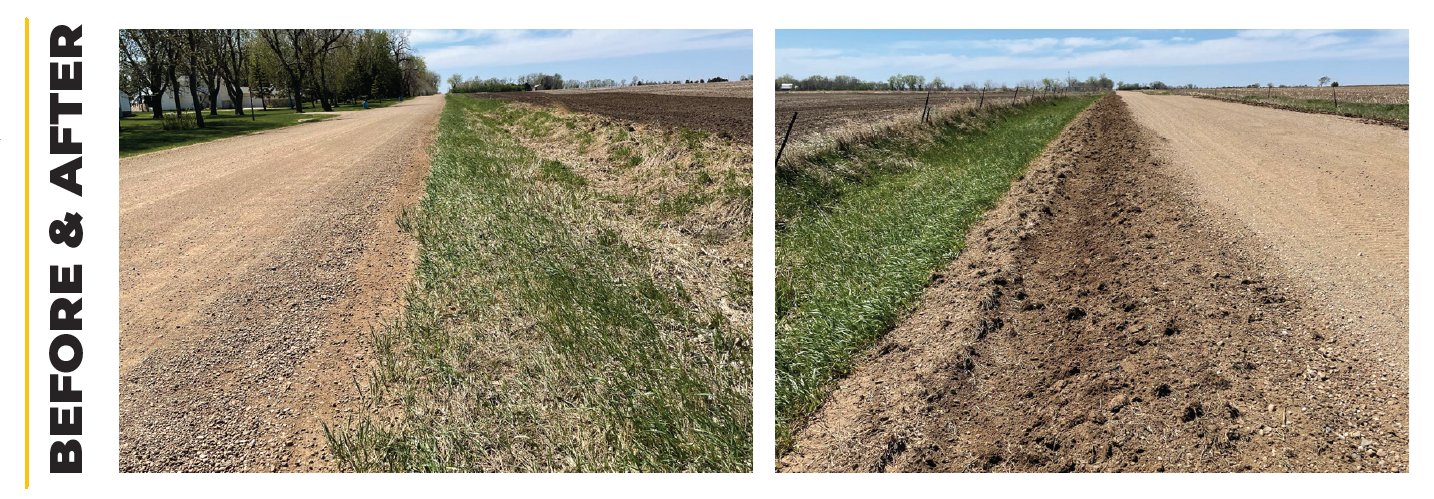
As part of our gravel road maintenance program, Georgian Bluffs has introduced a gravel reclaiming process to help preserve the quality of rural roads and improve long-term performance.
Over time, winter snowplowing and everyday vehicle traffic shift gravel from the centre of the road toward the ditch, creating berms along the shoulders. These berms can trap water on the road surface, especially after rain or spring melt. When water can’t drain off the road surface properly, it weakens the road base and leads to problems like potholes and rutting.
To fix this, our operations crews now perform gravel reclaiming in spring. This involves removing the berm along the road edge and recovering the material that was pushed away over time. Since the berm is mostly made of road gravel, this process allows us to reuse it during grading instead of losing valuable material to the ditch.
Here’s how it works:
- Berm Removal – Crews use equipment to cut into the berm at the road edge and pull the material back onto the road surface.
- Organic Material – Small amounts of vegetation or grass that grows on the berms may be processed with the reclaimed gravel. The reclaimed material is left to dry on the road shoulder for a few days to ensure the organic material has an opportunity to die off.
- Grading and Reshaping – The reclaimed gravel is mixed into the road surface, and the road is reshaped to ensure proper drainage from the crown (centerline) to the ditch.
This process helps maintain road shape, prevents premature deterioration, regains useable road width and reduces the cost of importing new gravel every year. Residents may notice the temporary presence of small grass clumps mixed with gravel along the shoulder of some gravel roads this spring. This is a normal part of the reclaiming process, and the road will be regraded the following week.
By reclaiming and reusing materials, we’re supporting smarter, more sustainable road maintenance in Georgian Bluffs.

